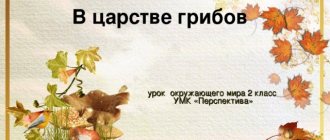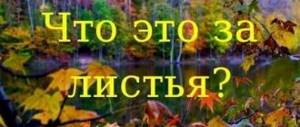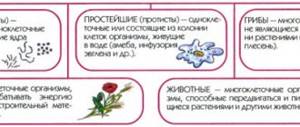Download material
so UNT / Lesson developments / Lessons on Understanding the World
Synopsis for the lesson on learning about the world “Plants and animals of forests and tugai” 4th grade
03/03/2015 7877 764 Deriy Alexandra Leonidovna Purpose: Students know what plants and animals are in the forests; know how to find a forest area on a map. Objectives: develop speech, observation, thinking; love of nature Learning outcomes: Can talk about the forest zone, plants and animals of the forest, compare and talk about the diversity of flora and fauna in the forest zone Key ideas: The forest is the source of human health. The forest is the decoration of the earth. The forest is our wealth. Tugai are small forests near lakes and in river valleys of steppes and deserts
During the classes
1.Call. Psychological attitude (5 min) 1. Organization of students’ activities. Boundless, vast, wide is the free Sary-Arka Steppe. Open to the wormwood winds, it spreads over hundreds of kilometers. Everywhere there is space and feather grass steppes and uneven hills and uneven chains. And suddenly, like a miracle of miracles, mountains, forests, high rocks, forest glades rose among the steppe - All this is the land of our native Kazakhstan! — We continue to study the natural areas of Kazakhstan. Today we will talk about forests and tugai. We will get acquainted with their location on the map of Kazakhstan, with the flora and fauna, and we will talk about the benefits of forests and their protection. — Today we will have a meeting of the Academic Council, which consists of several groups of scientists. They will explore forests and tugai. (children are divided into 4 groups) geographers, botany, zoologists, ecologists - Guys, who knows what these scientists study?
2. Understanding. (30 min) Work in groups. Formation of new knowledge and skills. — What natural zones are included in the territory of Kazakhstan? (Forest-steppe, steppe, deserts, semi-deserts, mountainous areas.) - What natural zone do we live in? - What is the steppe? When is she especially beautiful? - So we begin to explore the forests and tugai. Listen to the old Kazakh legend. When Allah, having created our wonderful world, gave some peoples wide and deep seas and rivers, others high mountains covered with dense forests, snow-white caps, and others with fertile fields and blooming gardens. And he left only dry steppes for the Kazakhs. Then the people got up and decided to ask the Almighty for at least a small fraction of the beautiful things that were left in their bag. But Allah did not respond to the request of the steppe inhabitants. Then the cheerful mockingbird Aldar-kose decided to outwit the Almighty by offering to play hide and seek. He agreed, but where could he hide in the deserted and flat steppe? Allah made a mound to hide behind and hid. And the cunning Aldar-Kose imperceptibly made a hole in the bag, from which rocky mountains covered with dense forests spilled onto the ground, clear lakes and clear springs poured out. Animals and birds settled in the forests. So says the legend. — And if we look at the map of Kazakhstan, we will see where nature has created an amazing world of colors, shapes and sounds. — Who knows where there are forests in Kazakhstan? — Near the city of Kokshetau, a picturesque place sounds like Burabay in Kazakh, and Borovoe in Russian. - In the Karaganda region - Karkaralinsk. - In Pavlodar region - Bayan-aul. — In the Kostanay region there is a famous forest called Naurzum-Karagay. (put icons on the map) - Now tell me, which of you has been to these places? — Let’s give the floor to geographers who, like other scientists, have studied forests and tugai forests, and now will tell us about them. 1 geographer - In the lowlands in the wide expanses from the Southern Urals in northern Kazakhstan to the Altai Mountains, small forests grow. And along the banks of rivers in the steppe and desert zones there are many tugai trees. Tugai are small forests near lakes and in river valleys of steppes and deserts. (teacher's explanation) 2 geographer - In the very north of Kazakhstan, near the city of Petropavlovsk, there are large tracts of pine forest, stretching in stripes along the Irtysh. They are called strip burs. — What is boron? — How do you understand “tape bur”? 3 geographer - A large tract of pine forest has been preserved in the Kostanay region. This is the famous Naurzum-Karagai forest. 4 geographer - In the Kokshetau region there are granite rocks among the steppe. Around them there are also pine forests, which are called granite forests here. — How do you understand the expression “granite forest”? - And now we will watch a small piece of a video about one of the pearls of Kazakhstan - Borovoye. We watch silently and carefully. And when you look, tell me what you saw from what the geographers told you about. - What is tugai? — Where are forests found in Kazakhstan? - So, in forests and tugai there are all favorable conditions for the growth and development of plants, fertile soils that do not freeze in winter, and an abundance of moisture. Does all this contribute to the growth of plants in forests and tugai? - Let's remember from grades 2 and 3, are all plants uniform? 1st floor - herbs, flowers 2nd floor - shrubs 3rd floor - trees - A word to botanists. They give the task to the groups. Mosaic. You need to assemble a tree from the pieces and name it. Trees are given: birch, aspen, pine, oak. Once collected, the speakers bring the trees to the board. There is a herbarium nearby. (attached to the board) - What can you say about birch? 1 botanist - Birch groves are small in area and are called kolki. Birch is a light-loving, fast-growing tree. Its top is decorated with curly fringe. Birch bark is white. People lovingly call her birch, curly, white-trunked. Many songs and poems have been written about her. Birch lives a long time. By the age of 80, it can reach 30 m in height. Birch groves are called light. This explains that many low-growing shrub plants grow in birch groves: rose hips, black currants, raspberries. Botanist 2 – Aspen groves, unlike birch groves, are dense. Aspen is a slender, straight, unique tree. Dense grasses grow under the tree canopy. There are drupes with thin stems and juicy red fruits, and strawberries. Botanist 3 - In some places a pine tree climbed into the forest. The pine forest is light, dry and beautiful. The air in it is clean and smells pleasantly of pine resin. Pine is a coniferous tree; instead of leaves it has needles. The trunks of pine trees are tall, straight, the lower and middle parts have no branches, only at the top there is a branch that forms the crown. 4 botanist - The power and majestic beauty of the oak tree attracts everyone. Its roots go deep into the ground, and therefore no storms are afraid of it. In the old days, oak was used to build ships. Nowadays furniture and parquet are made from oak wood. The bark is used in leather making. Information: The oldest oak tree (2000 years old) on earth is located in Lithuania. — What groups can these trees be divided into? - What is the difference? — And to learn even more about trees, let’s take a quiz. - What tree are matches made from? (aspen) - What tree is used to make skis? (birch) - Which trees have red leaves in the fall? (rowan) - What tree is a piano made from? (spruce) - What tree gives sap? (birch) ) - What kind of firewood is the hottest? (oak, birch) - Guys, not only plants grow in forests and tugai, but also a great variety of different animals live. A word from zoologists. The animals sent telegrams, but the telegrams were unanswered. You must guess who sent these telegrams. 1 zoologist - Animals hide from enemies in hollows, under the snow, in holes. And I don't do any of this. I have a lot of enemies. And yet I live without grieving. My nose, sensitive ears, fast legs, and inconspicuous fur coat help me out. It’s not for nothing that my eyes are “slanted” - not only forward and to the sides, but even a little back. The ears also turn in all directions - there is no need to turn your head in vain. I feed at night, it’s safer - on tree branches, tree bark. (hare-picture) 2 zoologist - Our real name was “ortox”. But since people were very afraid of us, they came up with different nicknames. I am a predatory, powerful, dexterous and cunning animal. If necessary, I can carry a load of 400-500 kg. I can run as fast as a racehorse. Despite the fact that we are predators, we really love fruits and berries, grains, herbs, tree buds, acorns. But if we don’t have enough of this food, then we attack wild boars, wood grouse and hazel grouse. (bear - picture) 3 zoologist - Our appearance is quite remarkable. The growth reaches two meters in height. The head is decorated with large horns. It’s not for nothing that they call us the plows: our horns are wide and huge, like plows. The upper lip is mobile, hanging over the lower lip. The movable lip helps us capture tree leaves and shoots, as well as remove mosses and lichens from trunks. But we also love salt very much. (moose picture) - But to find out what other animals are found in forests and tugai forests, we will read in the textbook. Page 96 (reading aloud) - What animals live in forests and tugai? — What birds are there? — How did the days adapt to life among trees and bushes? A word from environmentalists. 1 ecologist - Forest is our wealth! Forests are the lungs of our Earth. Plants provide the Earth with oxygen, and therefore life, just as the lungs supply our blood with oxygen. 2 ecologist - The forest is a storehouse that generously gives away its gifts: nuts, berries, mushrooms. The forest is the home of animals and birds. And how nice it is to visit the forest in the summer, to breathe deeply the life-giving air. A walk in the forest is a source of joy and health. 3 ecologist - There is no person on earth whose life would not be connected with the forest. Look around your room - the furniture, floor, windows, doors are made of wood. Books, notebooks, turpentine and much, much more are made from wood. However, every year the forest increasingly needs protection, and the restoration of what is thoughtlessly destroyed. Environmentalists propose to analyze the situation. What did the children do wrong in the forest? What rules did they break? 1 situation. Second-graders Olya and Sveta went into the forest. Tired of the journey, they sat down to rest and have lunch, took bread, butter, and eggs out of their bags. The girls ate and threw the bag of garbage under a bush. After wandering through the forest, the children picked baskets full of mushrooms, as well as two bouquets of flowers. Satisfied, they went home. Information: 1 cellophane bag takes 100 years to decompose. Situation 2. One warm Sunday day, our whole class went to the forest. It was wonderful in the spring forest. Birds sang, a light breeze moved the tops of the trees. Suddenly we saw a nest, and eggs in it. We took them in our hands, admired them, and put them in place. Suddenly we saw a hedgehog, wrapped it in a rag, and decided to take it home to a living corner. We returned home in a good mood. 3 situation. On a warm evening, my friend and I went to the nearest forest. While walking, we saw a huge anthill. Vitya wanted to see what was inside. He took a stick and began to pick at it. Then he got tired of it and we moved on. Having cut the birch bark, we drank birch sap and went home happy. Information: One ant nest destroys up to 20,000 harmful insects per day. 4 situation. The guys were walking in a birch grove on a summer evening. In the thickest part of the forest there were a lot of mosquitoes and the children picked off a branch to ward them off. It turned out to be a good defense! Suddenly it started to get colder and the guys decided to make a fire. They applied dry branches and lit it. It became warm and cozy. But it was already late, it was time to go home, and the fire was burning out. Satisfied, the guys went home. - So, what rules should we follow in the forest? Let's repeat. -Our country has adopted the “Law on the Protection and Use of Natural Resources,” which is written into the Constitution. Hunting for many animals is prohibited, and for many is limited; reserves are created where all nature is inviolable. It is the duty of every citizen to preserve and protect nature.
3. Reflection - What did we talk about today? — What is tugai? Boron? — Where are forests and tugai found in Kazakhstan? — What trees grow in forests and tugai? - What other plants? — What animals are found in forests and tugai? - Why should we protect the forest? -What does the forest give us? — What rules should we follow in the forest? — — I would like to end our lesson with the words: Love your native nature - Lakes, forests and fields. After all, this is our forever native land. You and I were born on it, You and I live on it, So let us be, people, all together We treat it kinder. Homework: pp. 56 -57 prepare a message Rate yourself with a smiley face.
See the downloadable file for the full text of the material.
The page contains only a fragment of the material.







